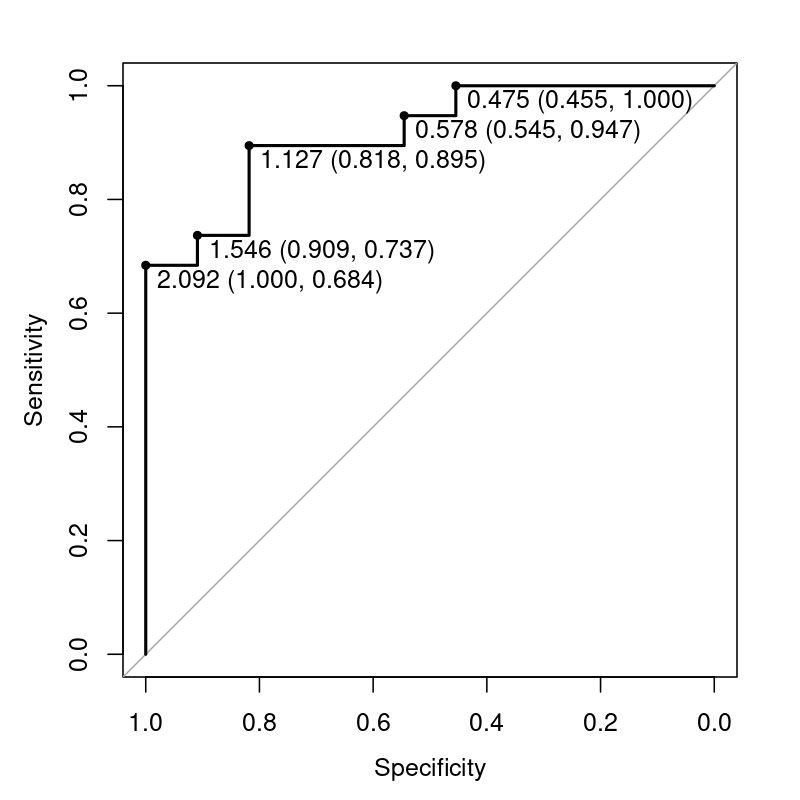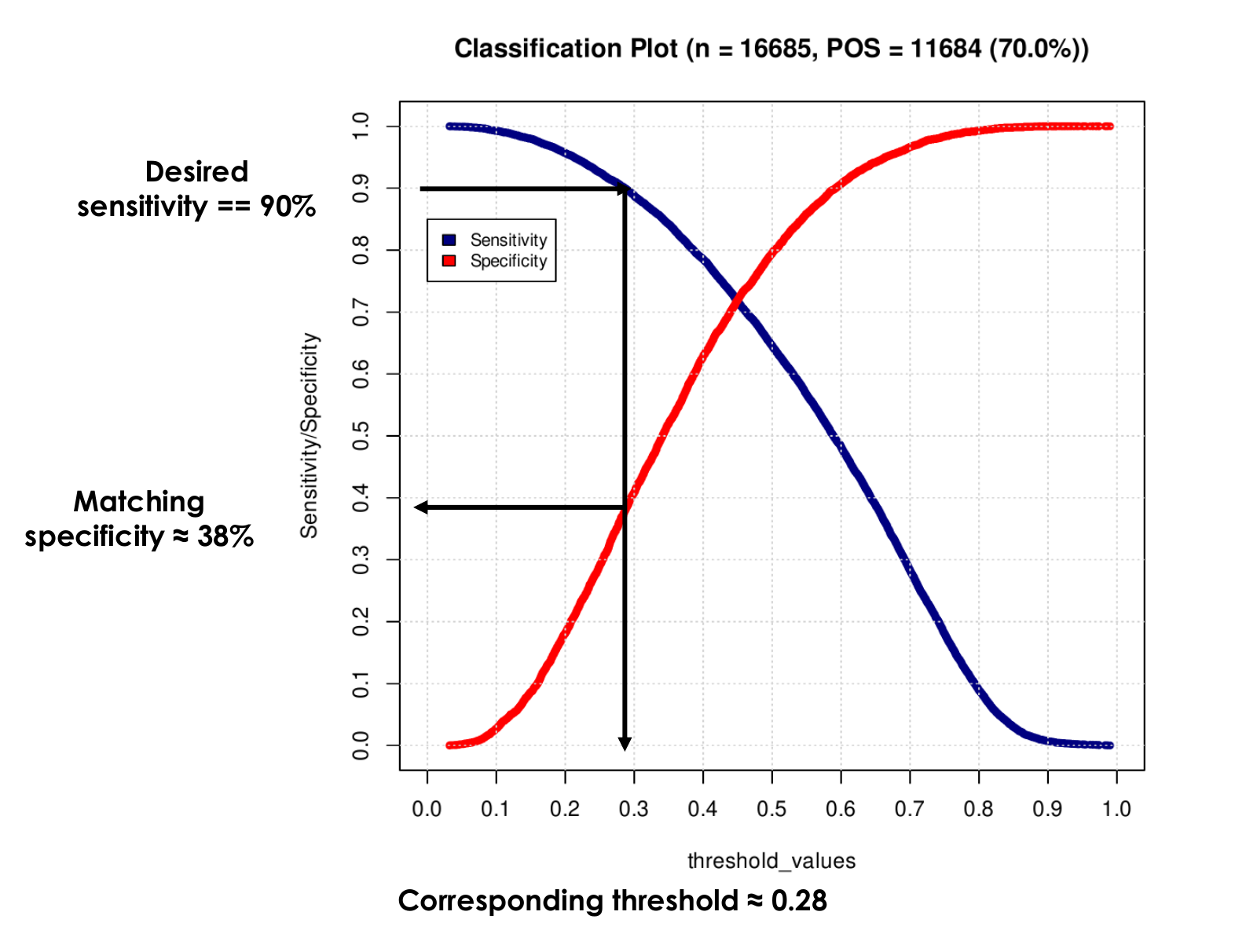In my understanding, the ROC curve plots the True positive rate and the False positive rate.
However, I've also read in other places that the ROC curve helps determine where the threshold for classifying something as "1" should be. Eg. Lets say if the probability of an an object is a "dog" is greater than 50% or 0.5, the classifier would classify it as 1=Dog, and <0.5 = 0 (Not Dog).
So where on this ROC curve does it show that threshold, if it only plots the True positive rate and False positive rate? Is the threshold simply where the "elbow" is? And do we pull the x axis' number or the y axis' number?
Eg. If we use the x axis' number (false positive rate), the green classifier's threshold should be 0.3 (aka anything above a 30% probability will be classified as 1=Dog)





